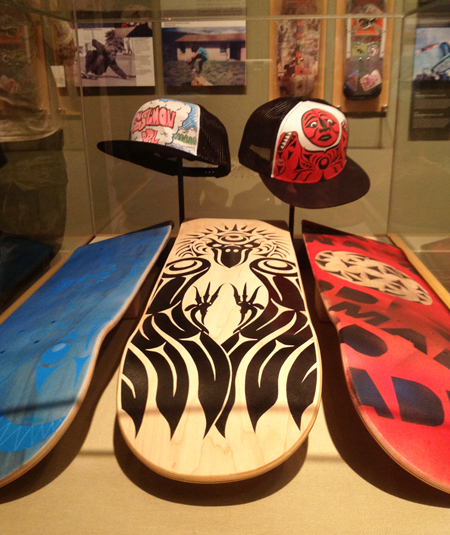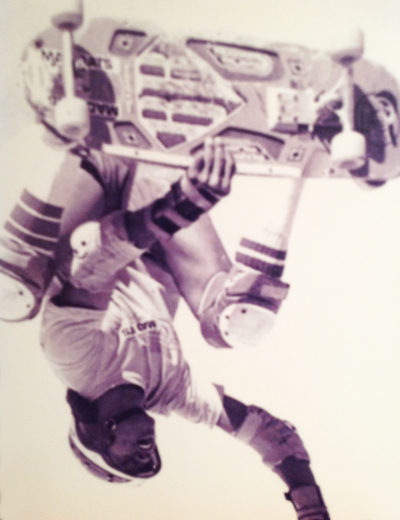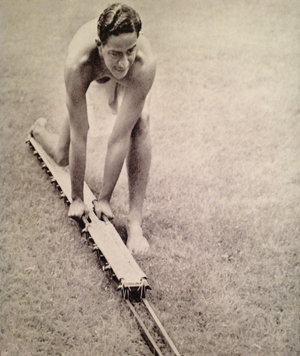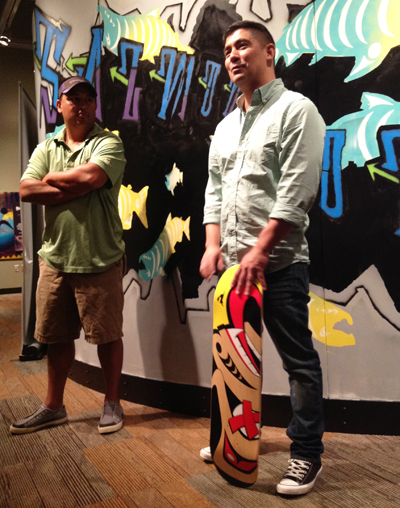Tulalip artists tap into the world of skateboard art

Photo/Kim Kalliber
By Kim Kalliber, Tulalip News
Growing up on the Tulalip Reservation in the 70s, skateboarding wasn’t a thing. Of course there wasn’t a lot of cement around the rez in those days either. But that time is changing and Native Americans are taking the skateboarding world by storm, with sleek designs and styles that reflect their Native culture.
As a kid, my mother, Tulalip tribal member Sherrill Guydelkon (Williams), made a daily trek in her old VW bug to Bellingham, where she attended college. My brother and I would happily tag along when we could to skate the campus, making use of any small inclines and stairwells that got in our path.

Photo/Kim Kalliber
As a teen in the 80s I moved to the city and discovered the world of skateboarders. It was the punk scene, and man was it cool. We wore leather jackets, had colored hair, we listened to bands like Circle Jerks and Bad Brains and skateboards were the mode of transportation. Skaters kept to empty lots and were continuously kicked off city streets. I remember a slew of ‘No Skateboarding Allowed’ signs posted around businesses and sidewalks – followed by a storm of ‘Skateboarding Is Not A Crime’ stickers. Remember those?
I am now in my 40s and my boyfriend and I still have a decent collection of skateboards. One of my best friends has an entire wall in his very “grown-up” house dedicated to skateboards. Skateboarding’s not just a fad, it’s a way of life, something you never outgrow. No longer strictly associated with rebellious youth and kept to empty swimming pools and vacant lots, it’s a mainstream sport, with skate parks sprouting up across the nation.
When you think of skateboarding, it’s not just a board with wheels; it embraces a wide style of art, design, fashion and music. And skaters should be taken seriously. You don’t just pick up a board one day and begin gliding jumps and riding rails. It takes a lot of practice and a lot of devotion. Skateboarding is an art form, a lifestyle and a sport.
Most people are aware that in the 60s skateboarding became huge in California, where boards were used as something to keep surfers moving during down times and flat waters, but what they don’t know is that skateboarding has a history with Indigenous peoples as well. Early skating can be traced to Native Hawaiian surfers, and to this day, Native Americans turn to skateboarding, not only to keep youth engaged in sports and stay fit, but as a means to convey their cultural identity.
The Tulalip Hibulb Cultural Center is celebrating this identity with a temporary exhibit. Ramp It Up: Skateboard Culture in Native America, organized by the Smithsonian’s National Museum of the American Indian, highlights the exciting world of Native American skateboarding.
The exhibit, on display through October 13th 2013, features vintage and contemporary skate decks, art and photos. You can also view rare video footage of skaters, including James & Richard Tavarez of the famed Zephyr surf team, which led to the Dogtown Z-Boys skate team, and the 4 Wheel Warpony team at the All Nations Skate Competition.

Photo/Kim Kalliber
But it’s the stories that accompany these classic images that really get the blood pumping – you can practically hear the grinding of wheels. From early Hawaiians that “surfed” the land on longboards, to kids in the 80s, skating in their basements and backyard ramps on reservations across the U.S., to modern day concrete warriors, skating and filming in national competitions and operating their own design companies.
Local artist Louie Gong, a Nooksack tribal member, known for his bold designs on shoes and skateboards was in attendance at the exhibit’s opening reception on August 9th, showing his 2010 handmade Dog Deck. Louie uses a utilitarian style, utilizing resources found in the environment to create things that are useful in everyday life, as an art form and educational tool.
“Every design has a story behind it and represents values and personal style. And with every piece, I think, how am I going to use this as a teaching tool?” explained Gong. Keeping this in consideration, Gong created the Dog Deck, which is a rez dog design. “I started thinking about what it means to grow up in a tribal community, and I remembered the rez dogs. These dogs roam around in packs and usually don’t have one particular owner, yet they survive. Generally we think of them in a negative light, but when I really reflected on the rez dogs in my community, after I was an adult, the characteristics they exhibited are actually positive. I try to show kids that rez dogs are cool; they’re resilient. And if it wasn’t for the fact that some of our ancestors displayed that same positive resilience, we wouldn’t have the opportunity to stand here in this room and talk about these things and express our self-determination.”
Tulalip tribal member James Madison, one of eight tribal member artists who contributed to the exhibit, explained what it means for these traditional Coast Salish artists to step outside of their routine and join the ranks of graffiti artists. When Mytyl Hernandez, Marketing, and Tessa Campbell, Curator, from Hibulb, approached the Tulalip team of artists and asked them to design skateboards, James recalls his initial reaction was, “Skateboards?! We’re busy carving totem poles.” But recognizing the value in this work, not just as a means to reach out to native youth, but to show that Tulalip artists continue to evolve and move forward

Photo/Kim Kalliber
in their craft, they dove right in, creating 10 decks, a handful of trucker hats and a mammoth graffiti wall.
“The artwork that we do, we put our stories in them and we teach our kids, and show who we are as people,” said Madison. “We can go anywhere and people know who Tulalip is; they know because of our art and they know because of our culture.”
Tulalip artists involved in the exhibit are Steve Madison, James Madison, Joe Gobin, Mike Gobin, Mitch Matta, Trudy Particio, Doug Seneca and Ty Juvinel. And who would have thought that these traditional Native artists would be rattle canning stencils and tagging skulls on graffiti walls? Skating really does bring out the cool kid in everyone.
For more information on the Tulalip Hibulb Cultural Center, visit www.hibulbculturalcenter.org.

Photo/Kim Kalliber

Photo/Kim Kalliber
